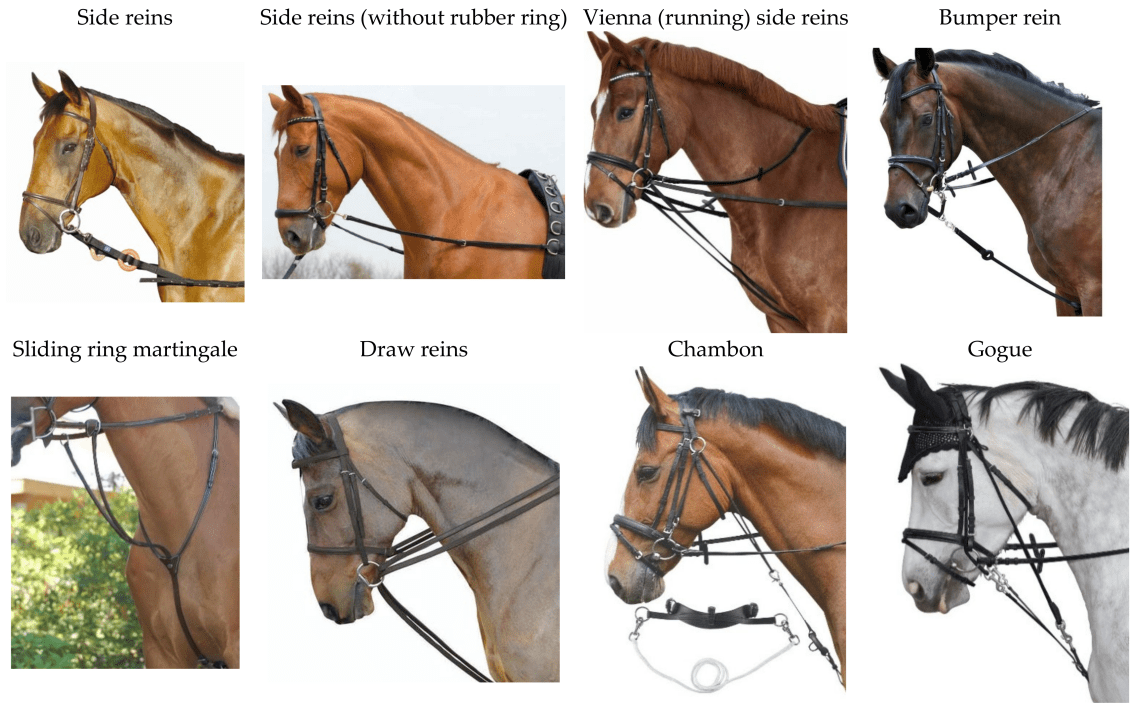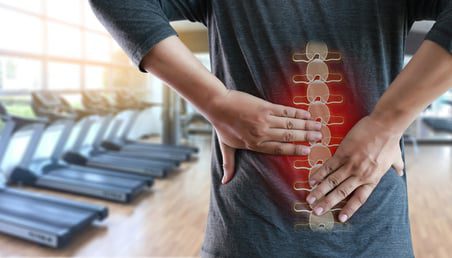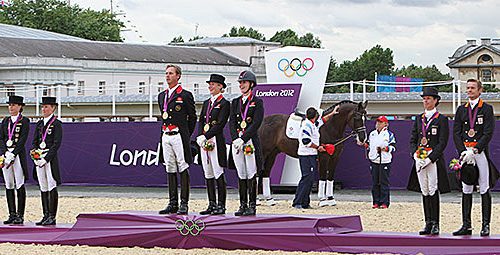
The physical form of the horse is the key to successful training (theory and practice)
Contents
The physical form of the horse is the key to successful training (theory and practice)
The best way to improve a horse’s fitness is to focus on developing a wide range of muscles. The purpose of changing the horse’s postural musculature is to help him move better from the very first minutes of training.
But why is this necessary?
In the horse’s body, different muscles perform different functions. And all of them are somehow involved in horse work. It is especially important to properly warm up and develop the muscles of horses carrying sports loads. By activating the wrong muscles, say in dressage, you can get problems such as stiffness of the horse (for example, on one side or another), limited flexion of his joints, which will directly affect the productivity of your training. In the worst case, the work of a horse without taking into account the state of its body and understanding the principles of its functioning can lead to irreparable harm to the health of the animal.
During training, many riders activate the so-called “gymnastic” muscles of the horse – powerful, long muscles that are directly responsible for the movement of the horse. However, among the functions of these muscles there is no interaction with the nervous system of the horse in the formation of new muscle actions and muscle memory. In addition, by overloading the “gymnastic” muscles, you can make the horse stiffer.
Horses have very strong back muscles, but if you overload them, it will directly affect the movement of the horse. According to veterinarian Gerd Huischman, the tension that comes from hypertonicity in the back actually slows down the horse’s hind legs, stiffening the horse instead of improving its flexibility and balance. Similarly, the disproportionate development of some muscles of the back in relation to others prevents the free movement of the legs. “Many of today’s riders have perverted the concept of strength,” says Dr. Haushman. “They spend too much time demonstrating the hypertrophied movements they think are necessary for dressage. However, this leads to enslavement and increased asymmetry. From the horse you need to make a harmonious athlete. The development of only motor muscles makes work for the horse boring. You can’t train gaits day after day, neglecting the development of the muscles that support the posture of the horse, its skeleton, forgetting about the need to strengthen the topline and back muscles … ”
When the rider works on the muscle memory of the horse, he must stimulate the work of the small muscles located closer to the spine and joints, the “internal” muscles. They support the work of motor muscles and are supplied with a large number of nerves. Think of them as the “communications” muscles. By activating these muscles, along with the larger propulsion muscles, you will be able to expand your horse’s range of motion.
According to Dr. Huisman, most riders can achieve significant gains in this kind of work by riding at slower speeds. He refers to the slow work of warming up the horse by Alois Podhajski, a representative of the Spanish Riding School. Dr. Huisman finds a very slow trot, reminiscent of Western jogging, to be particularly useful. It is this movement that will help to better stretch the joints and relax the spine before you add more momentum.
The second method, he, like Podhaisky, considers riding a long rein on hills and descents in the forest, until the horse’s neck drops and relaxes – this should have a positive effect on the horse’s nervous system. Sometimes it takes several months, but the work does not stop until the result is achieved. “Any horse that is pinched in the back and poll loses its natural rhythm,” Huisman says. – The more you release the large muscles of the back from tension, the more free you make the small muscles.
According to Sarah Le Jevien, MD, MD, at the Davis Sports Medicine Center, the muscles needed for movement are much easier to train than the muscles needed for maintaining posture. Working on their development requires targeted exercises. In addition, the principles of appropriate training themselves are still poorly understood – most of the knowledge was obtained as a result of adapting materials about similar muscles in the human body. Such analogies are not always accurate, as the human and equine organisms are vastly different. “What we do know for sure is that pain inhibits normal muscle activity,” says le Gevien. Pain can result from injury, overexertion, or imbalanced muscle development. The most efficient and planned work will primarily alleviate some of these variations of the disease state. Then you can work regularly and without consequences.”
Try to use two or three of the exercises below daily for the first ten minutes of your warm-up before starting the main work. Their implementation within 6 weeks will give a good result – you will be able to notice significant progress. Try experimenting with exercise sequences and variations to find the most effective system for you.
The first two exercises are aimed at relieving tension in the horse’s body. Their implementation should positively affect the movement of the animal.
According to the Jim Masterson method (which was successfully used in the practice of the US equestrian team), the free (without tension and resistance) work of the joints and limbs of horses is of paramount importance for the horse and its physical form. Appropriate exercises should be carried out before starting work with the muscles of movement, in a state of complete relaxation! With this, according to Masterson, three things will happen: 1) the horse will feel exactly where he is tense; 2) it will relax that area; and 3) the horse’s nervous system will be reprogrammed. “The key is not the amount of movement, but the level of relaxation in movement.” Asking for even small movements in a relaxed state is 10 times more effective than complex movements in a state of tightness. Masterson recommends two simple exercises that will relax the postural muscles that support the horse’s spine.
Exercise 1. Relieve tension in the back of the head, atlas and neck
Stand on the left side of the horse and place the fingers of your left hand on the bridge of the horse. Place the tips of two fingers of the other hand on the horse’s neck, a palm’s length behind and below the horse’s ear. The hand should lie very lightly, barely touching the coat. On the left side, gently move your nose a couple of centimeters from side to side. Make four swings and stop. This will show you that the horse’s movements are still relaxed. Shake your nose again and stop again. Repeat the exercise several times. If the horse is uncomfortable, you will feel tension in the postural muscles in that area. Do not try to stop the horse if he is nervous or trying to shake his head. Instead, soften your hands further and reduce the range of oscillation. This will give the horse some relief. Work on both sides several times a week. The exercise is very effective because the vibrations are so small that they don’t put too much strain on the horse.
Exercise 2. Releasing tension in the spine, from the sacrum to the back of the head
The purpose of the second exercise is to relax the spine from the sacrum to the back of the head. Stand at the hip of the horse, rest your right hand gently on the sacrum, above the base of the tail. Relax both hands. With your right hand resting on your hip, gently rock the horse from side to side. Focus on the sensations, feel if there is tension. The horse’s head should also swing from side to side. Continue for at least a couple of minutes.
Exercise 3: Using a technique that awakens the horse’s sensors
After you have relaxed certain parts of the horse’s body, you can use the technique to awaken the horse’s receptors during your warm-up. It is very popular in rehabilitation centers because it improves the horse’s awareness of the position of his body in space. This, in turn, has a positive effect on the movements of the horse – the animal understands what is happening with its body, where each foot steps.
Ideally, you will need a 30-meter site, divided into 3-meter sections with various “fillings” – pebbles, hard soil, water, sand, grass, etc. This awakens the horse’s neuro-receptors, which stimulate its neuromuscular system.
As an alternative to the “platform” you can use the space near the stables. Step off the horse on the street – walk on asphalt, gravel, grass, puddles. Sometimes it is possible to trot on such surfaces for 5-10 minutes, being careful, however, not to injure the horse. As each new “surface” is introduced, give the animal time to adapt.
This exercise will be especially useful for horses working only in the arena.
Exercise 4: Use ditches or ditches
Such obstacles are typical for cross-country: the horse goes down a short descent and immediately rises up (there can be about 3-4 steps between the descent and the ascent). This requires the animal to have coordination, strong hind and fore leg work, and a good sense of balance.
The exercise will teach the horse to readjust its balance faster, as well as correct asymmetry (one-sidedness) – the horse will have to bend and push the hind legs in the same way.
The ditches also allow the horse to be corrected in slow motion. If there is a ditch within your reach, work it at a controlled pace five to eight times a day. The horse’s body should move smoothly – do not allow him to swing his hindquarters to the side. In the absence of a ditch, improvise – find a stream (pay attention to the safety of descent and ascent). You can create an embankment or platform yourself.
Exercise 5. Lateral movements
Lateral movements improve the mobility of the vertebrae and hip joints, as well as the work of small muscles that require a certain amount of neuromuscular coordination. The simple exercise of the front turn loosens the horse’s chest and releases the restriction in the horse’s ventral muscle chain. These movements are often referred to as Horse Pilates. Either under the saddle or from the ground, perform three full rotations in each direction. Make sure the horse’s hind legs cross correctly. The horse should walk evenly in both directions.
Exercise 6
Pole exercises are often used in rehabilitation programs, especially those aimed at correcting the horse’s neurological problems. They play a big role in muscle stabilization and concentration, as well as improve coordination. By working on the poles, the horse corrects gaits and irregular movements (problems with gaits may include uneven use of the hind legs, bowing and stiffness of the neck). Depending on the problem you are fixing, use different variations of pole placement.
Exercise 6A. Snake on poles
Arrange 6-8 poles so that their ends touch: you will learn a long straight line. You can place the poles on the ground or raise them by 15-20 centimeters.
Slowly move along a dense serpentine (snake). Try to cross the poles clearly in the center. Your loops should be very tight, try to turn close to the poles, do not stretch the loops in length. Repeat the exercise several times.
Exercise 6B. Rising fan
Place the poles in a fan pattern (as shown in the diagram). Raise the inner ends of the poles 15 cm from the ground. The raised ends should be 60 cm apart. The center of each pole must be 1,20 m from the next.
Start working on the inside edge of the fan. Move slowly – the horse should take one step between the poles. Next, enlarge the circle and work along the outer edge. Try to take three steps between the poles. Keep repeating this sequence. Perform several approaches in both directions.
Exercise 6C. free route
Place the poles in the arena arbitrarily – at different angles and at different distances.
Work in the arena at the walk or short trot. Perform loops, races, arcs, serpentines, circles and volts. Cross the poles in a straight line and at an angle. Make a route and work on it for about three minutes. Change your driving order. Rest, then repeat again.
When everything is going well and smoothly, there is a risk that you will “earn money”. Always remember to rest, do not allow the horse to work to the limit of his strength or get bored. The effectiveness of training depends on such imperceptible details. Make activities comfortable and varied for the horse.
Zhek A. Ballu (source); translation by Valeria Smirnova





